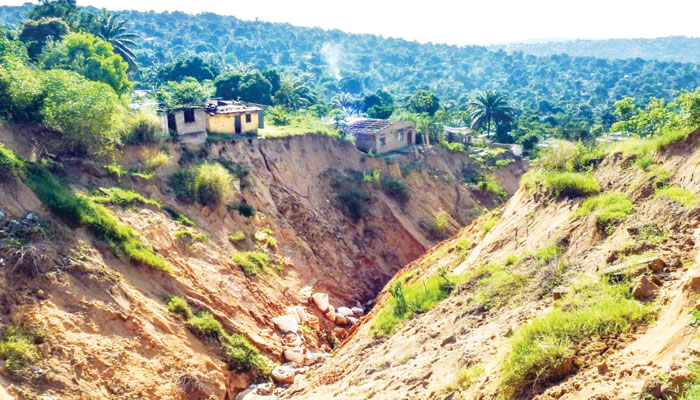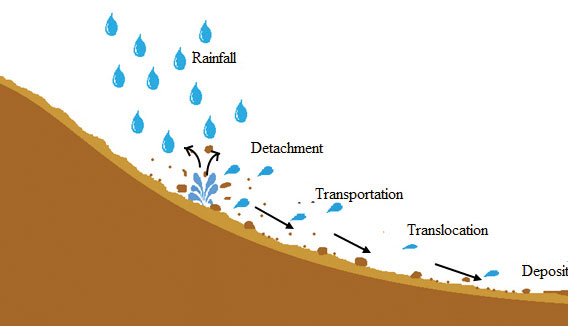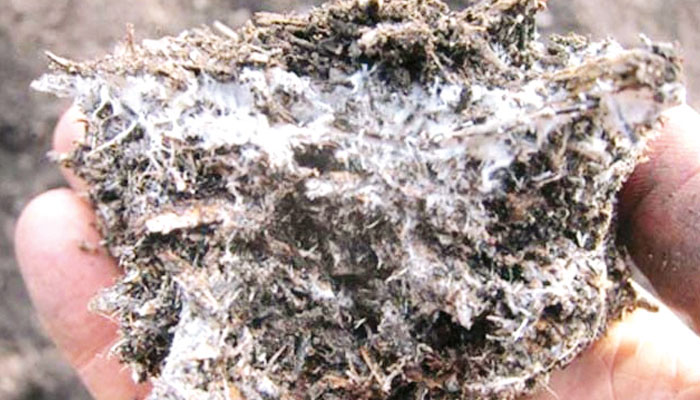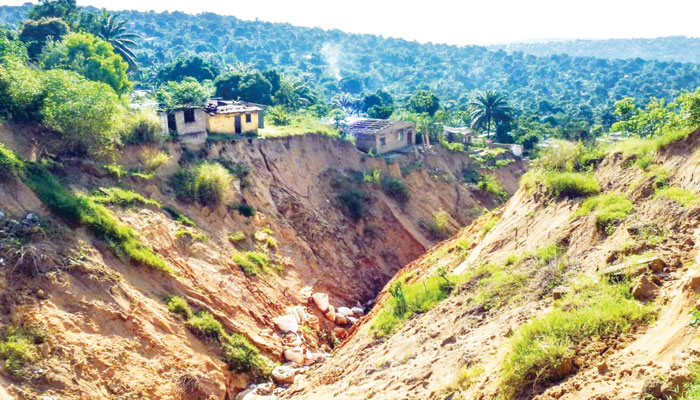
The black clouds cause rain, and as soon as the first drop of rain hits the ground, a series of invisible (invisible) processes begin. The scientific consciousness and the inquisitive mind have tried hard to uncover these hidden phases and proved quite correctly that even a small drop of rain has such a force that when the first drop falls on the surface of the earth, the earth The sediments (soil) present on the surface are blown away. Scatters of sand, mud and pebbles are seen everywhere.
As countless raindrops coalesce, they exert a force that causes particles on solid ground to break and flow. By creating depressions in some places and elevations in some places, they carve different surprising features on the earth’s surface. This is the first step in raindrop erosion or deposition that controls the entire cosmological system as a whole, as this erosion also results in the incorporation of metallic and mineral components directly observed during field surveys. Access is impossible.
The final amount of turbidity present with raindrops depends on the intensity of the rainfall, the poor turbidity of the turbidity, and the presence of any vegetative protective layer. The weight (which is more than about 110 tons) is covered.
The innumerable raindrops falling in this direction strike the earth’s surface with full force, which can be estimated from the fact that two inches of rain falling on one acre in one hour produces so much energy. which lifts an ideal seven-inch hydraulic component 258 feet.
Of course, these energies do more to clean the sediment than to lift the sediment. The second stage of soil erosion begins when the turbidity components present in the raindrops separate from the water droplets, which is called transport of the components along the water droplets.

This movement of water is also associated with the splashing action of raindrops, but it is of a minor nature. The most important is the coalescence of the droplets and the attachment to the flowing water, which allows the transfer of turbidity from one location to another. The force of raindrops on exposed rock components seals off the surface protective components. As the raindrops do this, the result is that the pebbles move around the earth’s surface and spread.
The finer sediments become embedded between the larger and coarser sediments, resulting in the pores and passageways becoming dotted, allowing water to enter the sediment. In this way, the membrane is rammed by the energy of countless raindrops, almost closing the passages between the components. This process acts as a “waterproof” on the tidal surface and about 98 percent of the raindrops coalesce into running water and then into rivers.
Flowing water flows more or less uniformly along the surface of the channel in the form of a shallow water table. This is called “shit wash”. Its effect is progressively faster and slower. “Sheet washes” are effective in separating light aqueous components and soluble components. When flowing water enters an uneven surface, it becomes highly concentrated and its velocity also increases.
As minor depressions combine to form larger depressions, the flow becomes increasingly concentrated. Because of this, the erosion force becomes more direct over smaller areas, but the most important result is that there is a fundamental change in the direction of flow in a smooth channel. When water flows over a smooth surface, it takes a straight path for its travel which is parallel to its movement.
Lamminer Flow Sometimes the speed of flow on the other side of some point becomes faster or the channel becomes uneven, so the water that moves towards the uneven parts of the channel slows down. And the “class drift” comes to an end. Here the flowing water begins to rotate, this is another type of movement of flowing water which is called Turbulent Flow.
Turbulent flow of water greatly increases its erosive capacity. The uneven forces of water movement lift the affected components and prevent them from falling again (sediment). Suspended components move along with the flow. Eddy currents easily carry heavy materials in various forms. Swirling motion briefly lifts the heavier particles to the surface and re-incorporates them with the water flow. In this way, the ingredients keep moving along with the current, constantly churning.
This process of water is called saltation. Heavy rock fragments are carried forward along the channel of intruding water or by erosion. They have the ability to cut through any rock they touch. Its scraping and rubbing turns it into chips or fine soft particles. This erosion is a very important part of the process of land erosion, because it creates not only important features on the land, but also high mountains. The sediments on the peaks contain precious metals and minerals in addition to pebbles, which are impossible to obtain from these rocky mountain ranges, but a single drop of rain carries it from the sky-high mountains to the lowlands through a rain channel. delivered and there is also the fact that a small drain is visible immediately after the onset of heavy rain.
As the erosion process takes place, the soil is separated from the soil, sand and gravel and the channels become larger, then many channels join together to provide a wide passage for the flowing water. Instead of taking twists and turns, they continue their journey forward. This is because where the soft rock at the base of this composition is cut by the water, the hard rock remains in place. So when a hard rock comes in the way of the water, it turns its face towards the soft rock.
In the same way, this process continues and the water channel takes a tortuous shape. Heavy and light-density metal and mineral components are carried up and along the channel by the current. The light-density minerals travel long distances with the current, but the heavy-density minerals reach the channel surface. Or stick to the edges and stop.
Sometimes a part of the meandering channel is cut off from its original course and turns into a “bow lake” which is a reservoir of high density mineral and metal particles, prominently named diamond, gold. And comes in platinum. Many countries are trying to achieve this by making use of modern technology, which is having a positive impact on the economy of the state.
Air pollution storage underground fungi

In this modern era, experts are making new discoveries by researching various things. In this regard, British researchers have studied a type of fungus that stores 36 percent of the world’s annual air pollution underground. According to a report, this fungus’ interaction between soil, plants and air could potentially be the neglected solution to the world’s air pollution.
According to the researchers, mycorrhizal fungi live underground on every continent and interact with plants. Provide plants with ingredients for survival.
Researchers are trying to figure out how big and old this underground network is. According to the report, this fungal network in the American state of Michigan is spread over 91 acres and it accumulates 13 gigatons of carbon annually from air pollution. Professor Kate Field of Sheffield University in England says that mycorrhizal fungi carbon modeling, conservation and Resilience offers a hidden solution, and when thinking about solutions to the climate crisis, think about what already exists.
setTimeout(function(){
!function(f,b,e,v,n,t,s)
{if(f.fbq)return;n=f.fbq=function(){n.callMethod?
n.callMethod.apply(n,arguments):n.queue.push(arguments)};
if(!f._fbq)f._fbq=n;n.push=n;n.loaded=!0;n.version=’2.0′;
n.queue=[];t=b.createElement(e);t.async=!0;
t.src=v;s=b.getElementsByTagName(e)[0];
s.parentNode.insertBefore(t,s)}(window,document,’script’,
‘https://connect.facebook.net/en_US/fbevents.js’);
fbq(‘init’, ‘836181349842357’);
fbq(‘track’, ‘PageView’);
}, 6000);
/*setTimeout(function(){
(function (d, s, id) {
var js, fjs = d.getElementsByTagName(s)[0];
if (d.getElementById(id)) return;
js = d.createElement(s);
js.id = id;
js.src = “//connect.facebook.net/en_US/sdk.js#xfbml=1&version=v2.11&appId=580305968816694”;
fjs.parentNode.insertBefore(js, fjs);
}(document, ‘script’, ‘facebook-jssdk’));
}, 4000);*/



